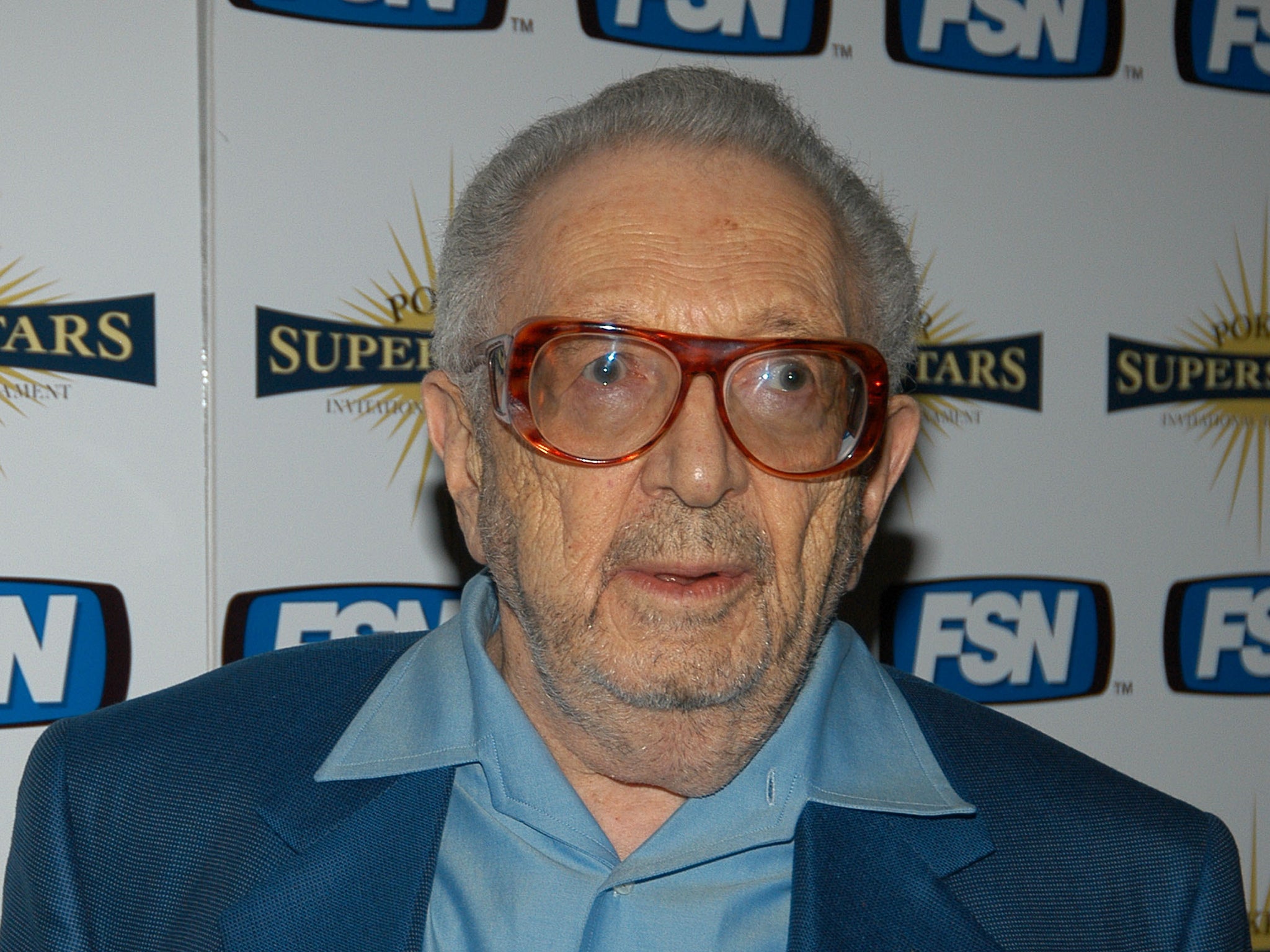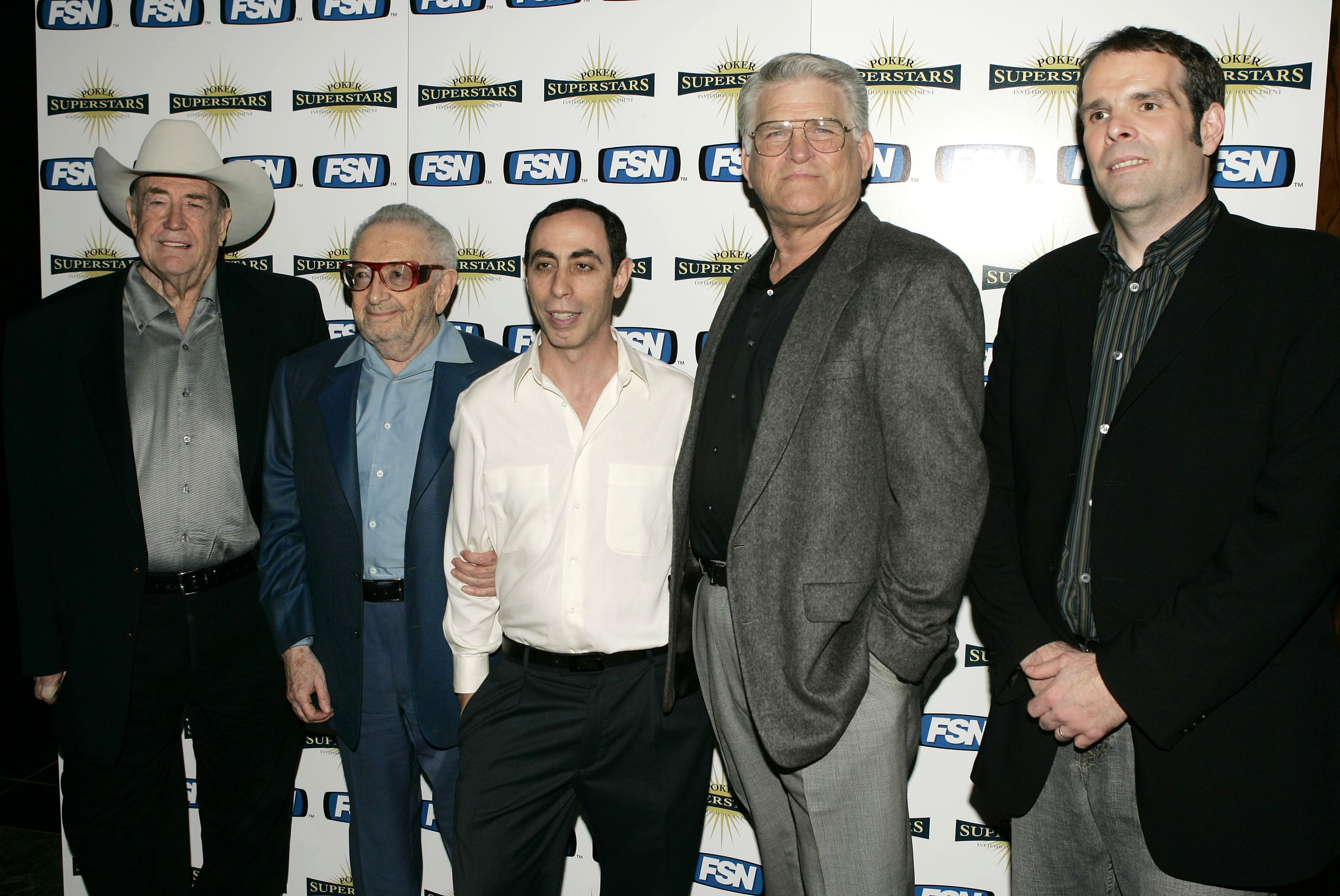Henry Orenstein: Holocaust survivor who became a tinkerer and toymaker
As well as bringing a myriad of toys on to shelves, Orenstein help popularise the widely successful Transformers franchise in the US

Ingenuity and chance – these were the threads that ran through Henry Orenstein’s story from his survival in Poland during the Holocaust to his life in the United States where he reinvented himself as an entrepreneur.
A tinkerer and toymaker, Orenstein enlivened the playscape of the US with the raft of dolls, racing cars and other novelties that he helped bring to toy shelves beginning in the 1950s.
“The Nazis took away his childhood,” a cover story for Newsweek magazine declared of Orenstein in 2016, so he “taught the world how to play”.
He was best known for his role in two innovations: Transformers, the wildly popular shape-shifting robot toys that he helped introduce in the 1980s, and the hole-card camera; a device that sparked the phenomenon of televised poker.
Orenstein did not invent Transformers, one of the most successful toy franchises of all time with accompanying comic books, an animated TV series and films. But he was credited with recognising the potential of a tiny morphable car – the genesis of the Transformers line – made by the Japanese toy company Takara and which he noticed at a New York toy fair and pitched to Hasbro. It was his ingenuity, Hasbro executives told Newsweek, that enabled him to spot an ingenious idea.
As for the element of chance, Orenstein was well acquainted with its risks as well as its rewards as a player of poker, a game he began to play seriously in his 60s. He turned 85 the year he was inducted into the Poker Hall of Fame.
By then, Orenstein was already famous in the poker world for helping convince TV executives of the dramatic value of the hole-card cam, which he patented in 1995. For players who had no knowledge of which cards their competitors held, the mystery of the game remained but for spectators, Orenstein’s invention offered a degree of omniscience seldom afforded in life, when the ending of a story can scarcely be seen at the beginning.
Henryk Orenstein was born on 13 October 1923 to a Jewish family in Hrubieszow, in southeastern Poland. He described his father, a businessman who exported grain produced by local farmers, as the wealthiest man in town. His mother was a homemaker.
“I had all the luxuries,” Orenstein said in 2001 in a lecture at the Centre for Jewish Studies in New York. “I was very lucky that way.”
Orenstein also documented his life story in a memoir, I Shall Live: Surviving the Holocaust Against All Odds, published in 1987.
He turned 16 shortly after the Nazi invasion of Poland in 1939, which marked the beginning of the Second World War. With his father and three brothers, he spent the early part of the war in a Soviet-occupied region of Poland, while his mother and sister remained behind.
“We felt the Germans would not kill women,” Orenstein told Newsweek, “but they might kill men.”
In 1941, when Hitler invaded the Soviet Union, the Orenstein men turned back for home, a journey that left them in constant search of food and shelter and always at the mercy of strangers as they sought to evade the Nazis. At one point, a woman hid them in a haystack; at another, Orenstein secreted himself in an oil drum.
The Nazis, “were actually hunting people”, like animals, he said in the lecture. “That’s what it felt like.”
Once reunited, the Orensteins escaped a round-up of Jews by taking shelter in a neighbouring house, where a hideaway had been fashioned for them between two walls. They were eventually forced to surrender to the Nazis when they ran out of food. Separated from their children, Orenstein’s parents were executed over a pit in the local cemetery.
Along with his siblings, Orenstein was deported for forced labour. He survived five Nazi concentration camps. At the Budzyn camp in Poland, he heard a camp official call for, “all Jewish scientists, engineers, inventors, chemists and mathematicians”. Drawing upon his ingenuity, he decided to take a chance.

Although only one brother was a doctor, Orenstein attested that he and all his siblings met the qualifications for the select group, which was ostensibly tasked with aiding the German war effort. In fact, the prisoners detailed to the operation did little but operate adding machines, performing meaningless mathematical operations and other useless tasks.
“It was a cover-up on both sides!” Orenstein said. “German professors created this project to keep themselves from being drafted into the army. If they told the Gestapo that we were faking, we would have been killed, but they would have been drafted into the German army... so they decided to fake the whole thing. Lucky for us.”
During a forced march toward the Baltic Sea at the end of the war in 1945, Orenstein and his fellow prisoners awoke near a forest to discover that the guards were gone. Liberation had come.
By the end of the Holocaust, Orenstein’s sister and one of his brothers had perished. With his two surviving brothers, he emigrated in 1947 to the US, where he did various jobs before trying his hand with toys. His first success, according to published accounts of his life, was an inexpensive doll sold in grocery stores to compete with costlier models sold elsewhere.
His other toys included Johnny Lightning racing cars, what Barbie competitors dubbed “Dawn” dolls and Baby Magic, a baby doll that cried, smiled and winked. A subsidiary of his company, which was called Topper Corp, produced the first line of toys based on the children’s television show Sesame Street in the early 1970s.
Around that time, Topper filed for bankruptcy. But Orenstein remained active in the toy trade, notching his greatest success when he spotted the Japanese toy that inspired the Transformers line.
“Henry was the bridge in this one transaction with Takara,” Alan Hassenfeld, the former chairman of Hasbro, told Newsweek. “Henry, basically, had a sense that Transformers was going to be something that would be transformational for the toy industry... to be able to take a car and, with a little bit of dexterity, change it into another toy, that was something magical.”
Orenstein used his wealth to fund the Orenstein Project, a charity that, among other activities, supports needy young and elderly people in Israel, including Holocaust survivors.
He said he began playing poker when his former passion chess began to give him headaches.
“There are so many aspects to it,” he said, reflecting on the appeal of poker. “You have to have the ability to read people’s faces and movements. You can absolutely give away the hand by the look on your face.”
However, he found televised poker stultifyingly dull because the viewer had so little knowledge of the cards in play. Poker player James McManus compared it to “watching bears hibernate”.
Orenstein, however, discerned the thrill that a hole-card cam could inject into the game and foresaw what he described as a “sleeping giant”. His patent for the camera was one of roughly 100 that he reportedly received.
“Poker’s been on TV for a long time but it was always a closed-door, backroom, smoky atmosphere that didn’t let the viewer in,” George Greenberg, an executive with what was then Fox Sports Net, said in 2005. “With Henry’s invention came the ratings.”
Orenstein was the creator and executive producer of US television programme Poker Superstars Invitational Tournament and produced the show High Stakes Poker beginning in the 2000s. He was himself an accomplished player, having won the 1996 World Series of Poker Seven Card Stud tournament.
“I was always creative and always a dreamer,” Orenstein once said, reflecting on his life, his survival of the Holocaust and the successes he achieved later. “I never believed I would survive. There was no reason to leave us alive.”
Henry Orenstein, toymaker and entrepreneur, born 13 October 1923, died 14 December 2021
© The Washington Post

